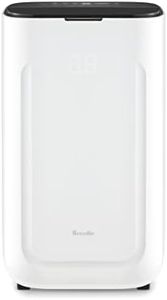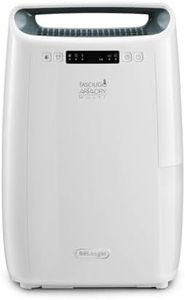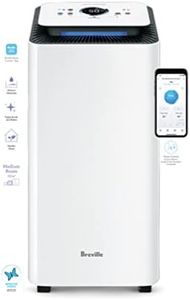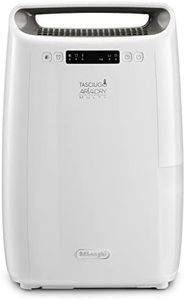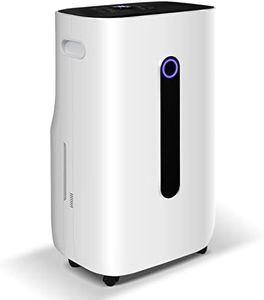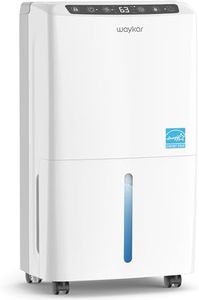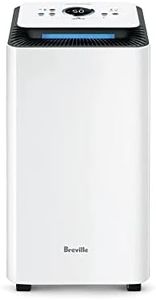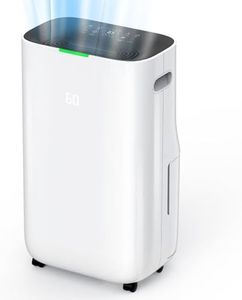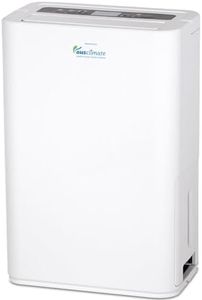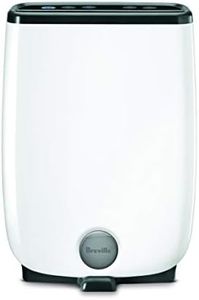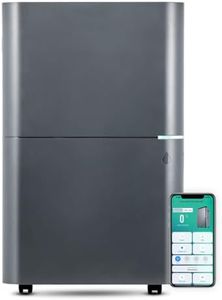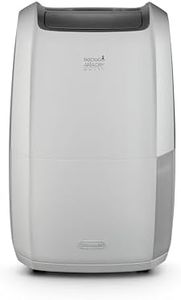We Use CookiesWe use cookies to enhance the security, performance,
functionality and for analytical and promotional activities. By continuing to browse this site you
are agreeing to our privacy policy
10 Best Dehumidifier For Crawl Space
From leading brands and best sellers available on the web.By clicking on a link to a third party's website, log data is shared with that third party.
Buying Guide for the Best Dehumidifier For Crawl Space
Choosing a dehumidifier for your crawl space is important because it helps control excess moisture, prevents mold and mildew growth, and protects your home’s foundation. The right dehumidifier will work efficiently in the unique conditions found in crawl spaces, which are often damp, cool, and hard to access. To make a good choice, focus on understanding how the main features relate to the size of your space and your specific moisture issues.Capacity (Pints per Day)Capacity indicates how many pints of water the dehumidifier can remove from the air in a 24-hour period. It's a key specification because it tells you if the dehumidifier is powerful enough for your crawl space’s moisture levels. For small crawl spaces with mild dampness, lower capacities might be enough, but larger or very damp spaces require greater capacity. Estimate your moisture problem—if you notice standing water or persistently high humidity, lean toward higher capacity; if it’s only slightly damp, a lower capacity could suffice.
Coverage Area (Square Feet)Coverage area refers to how much floor space the dehumidifier is designed to handle, measured in square feet. Matching this to your crawl space’s size is crucial for efficient operation. Small crawl spaces (under 800 square feet) need less coverage, while larger spaces should use a unit rated for 1,000 square feet or more. Choose a model that can at least cover your crawl space’s size to ensure it works properly without running all the time.
Drainage OptionsDrainage options describe how the collected water is removed from the dehumidifier. Standard types include manual-empty buckets, gravity drains, or built-in pumps for continuous drainage. In crawl spaces, it’s often hard to empty buckets, so continuous drainage is usually best—either by hose or pump. Consider how easy it will be for you to get under the house to empty a bucket versus setting up a drain hose to a nearby sump or drain.
Size and Build QualityThe size and build quality determine if the dehumidifier can fit and survive in tough crawl space environments. Crawl spaces are often tight with limited entryways, so a compact, rugged design is ideal. Think about the physical space and how you’ll move and install the unit. Also, ensure it has weather-resistant materials since crawl spaces are harsher than regular rooms.
Operating Temperature RangeOperating temperature range specifies the temperatures in which the dehumidifier will work properly. Crawl spaces can be colder than other parts of your home, especially in cooler months, so it’s important to pick a unit that can handle low temperatures without freezing up. If you live in a cold region or your crawl space gets chilly, choose a dehumidifier rated for low-temperature operation to avoid problems with performance or damage.
Energy EfficiencyEnergy efficiency tells you how much electricity the dehumidifier uses to remove moisture. This is worth considering because crawl space dehumidifiers often run for long periods. More efficient units use less power, which is better for your energy bills and the environment. Look for units with energy-saving features if you plan to use it continuously, especially in larger or damper spaces.
Controls and MonitoringControls and monitoring features define how you set, adjust, and read your dehumidifier. Simple dial settings are easiest, but digital controls with humidity readouts and auto-humidity sensors let you be more precise. In a crawl space, remote sensors or Wi-Fi/remote monitoring features can be especially handy, so you don’t have to regularly crawl in to check or adjust the unit.
